Infection skin folds. Intertrigo: Causes, Symptoms, and Treatment of Skin Fold Infections
What is intertrigo and how does it develop. What are the common symptoms of intertrigo. How can intertrigo be treated effectively. What preventive measures can be taken against intertrigo. Which secondary infections are associated with intertrigo. How does intertrigo affect different age groups. What are the best home remedies for managing intertrigo.
Understanding Intertrigo: A Common Skin Fold Condition
Intertrigo is a prevalent skin condition that occurs in areas where skin rubs against skin, particularly in moist, warm environments. This inflammatory rash can affect people of all ages, but it’s more commonly observed in infants, older adults, and individuals with compromised immune systems.
Why does intertrigo develop? The primary factors contributing to its development include:
- Friction between skin folds
- Excessive moisture
- Elevated temperatures in flexural areas
- Lack of air circulation
These conditions create an ideal breeding ground for microorganisms, exacerbating the rash and its associated symptoms. While intertrigo itself isn’t contagious, secondary infections can complicate the condition.
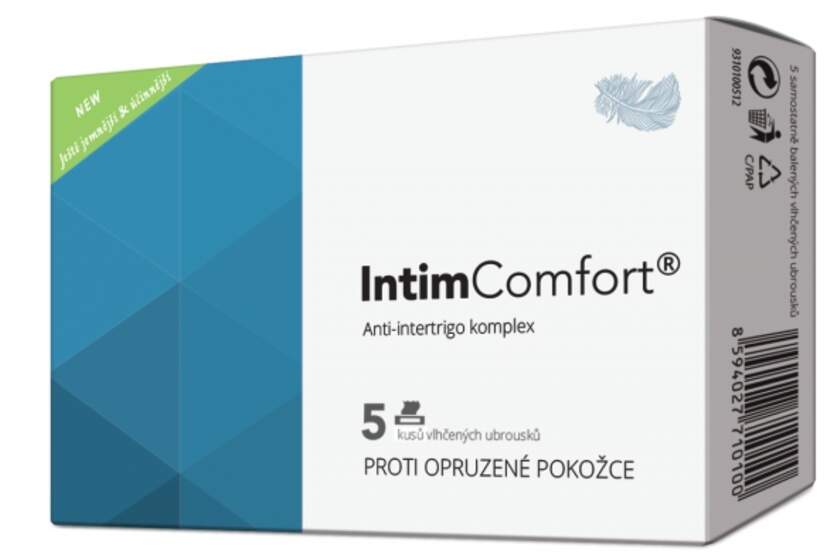
Identifying the Signs and Symptoms of Intertrigo
How can you recognize intertrigo? The condition typically manifests as a reddish rash in skin folds, often appearing symmetrically on both sides of the affected area. Common symptoms include:
- Itching or discomfort
- Burning sensation
- Prickling feeling
- Pain in severe cases
As intertrigo progresses, the affected skin may become inflamed and raw. In some instances, the skin might crack, bleed, ooze, or develop a crust. The surrounding area may also become scaly.
Where does intertrigo commonly occur? The most frequently affected areas include:
- Armpits
- Under and between breasts
- Groin area
- Buttocks
- Between toes
It’s important to note that intertrigo can also affect smaller skin folds, such as those behind the ears, around the chin, or on the eyelids.
Secondary Infections: When Intertrigo Becomes Complicated
While intertrigo itself is an inflammatory condition, it can pave the way for secondary infections. These infections can worsen the rash and introduce additional symptoms, such as an unpleasant odor. What types of secondary infections are associated with intertrigo?
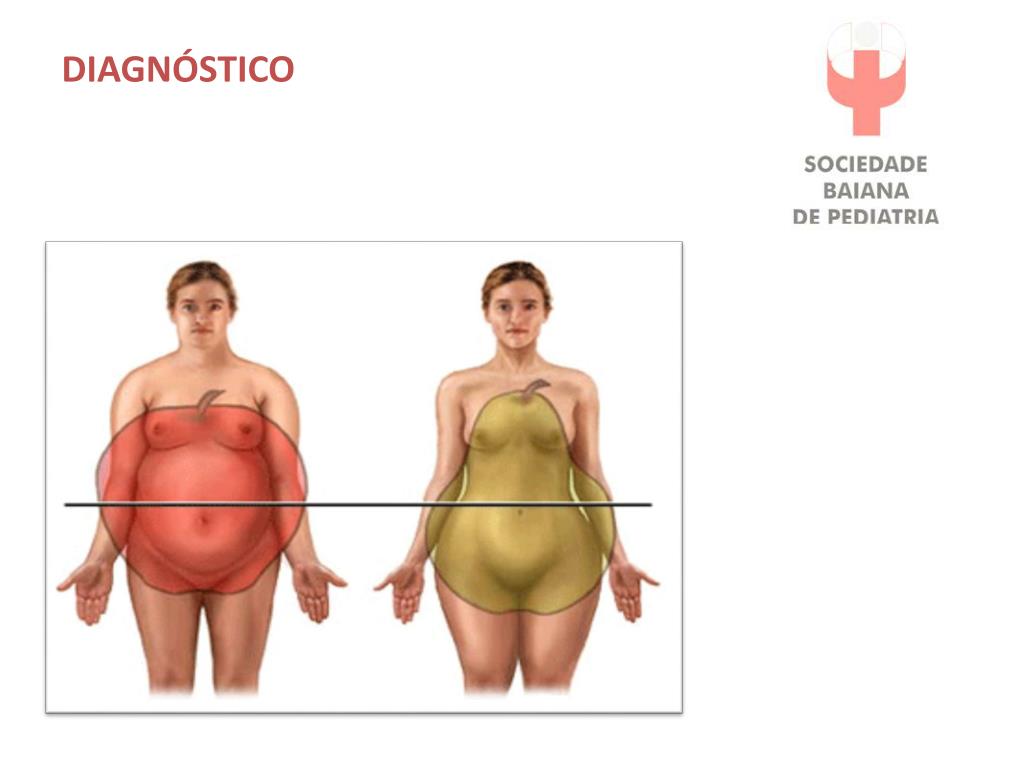
Fungal Infections
Candida, particularly Candida albicans, is the most common fungal infection associated with intertrigo. It accounts for 80% to 90% of all skin yeast infections. A Candida rash typically appears bright red and raw, often accompanied by raised, scaly lesions called plaques. Pimple-like bumps (papules and pustules) may also be present.
Bacterial Infections
Several bacteria can lead to secondary infections in intertrigo cases. These include:
- Staphylococci
- Streptococci
- Pseudomonas
- Corynebacterium
Viral Infections
Although less common, viral infections can also complicate intertrigo. The most frequently associated virus families are:
- Poxviridae
- Papillomaviridae (HPV)
- Picornaviridae
- Retroviridae (HIV)
- Herpesviridae
- Togaviridae
- Parvoviridae
Treating Intertrigo: From Home Remedies to Medical Interventions
How can intertrigo be effectively treated? The approach to treatment depends on the severity of the condition and the presence of secondary infections. For mild cases of inflammatory intertrigo without infection, the focus is on keeping the affected area clean and dry.

Home Remedies and Over-the-Counter Solutions
What can you do at home to manage intertrigo? Here are some effective strategies:
- Keep the affected area clean and dry
- Use antiperspirants to reduce moisture
- Apply petroleum jelly to reduce friction
- Use talcum powder to absorb excess moisture
- Try triple paste with zinc oxide, aluminum acetate, and petrolatum
Medical Treatments
When should you seek medical treatment for intertrigo? If home remedies don’t provide relief or if you suspect a secondary infection, it’s time to consult a healthcare professional. Medical treatments may include:
- Topical antifungal creams for yeast infections
- Topical antibiotics for bacterial infections
- Oral medications for severe cases
- Corticosteroid creams to reduce inflammation (used cautiously and under medical supervision)
In extreme cases, particularly for women with chronic intertrigo under the breasts, breast reduction surgery has been considered as a treatment option.
Preventing Intertrigo: Strategies for Skin Health
Can intertrigo be prevented? While it may not always be possible to prevent intertrigo entirely, several strategies can reduce your risk:
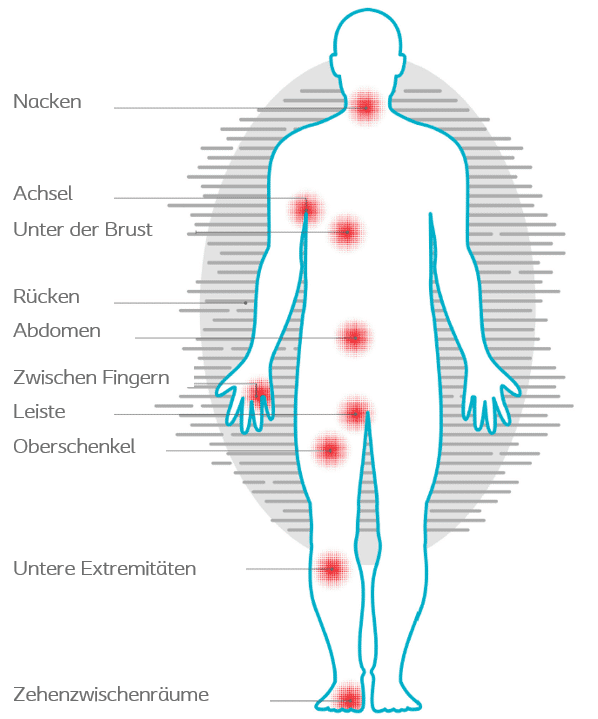
- Maintain good hygiene, especially in skin fold areas
- Keep skin folds dry and well-ventilated
- Wear breathable, moisture-wicking fabrics
- Lose weight if overweight or obese
- Manage underlying conditions like diabetes
- Use barrier creams or powders in prone areas
For those who exercise regularly, it’s crucial to shower after workouts and thoroughly dry the skin, especially in fold areas. Avoid rubbing the skin vigorously, as this can cause irritation.
Intertrigo Across Different Age Groups
How does intertrigo affect different age groups? While it can occur at any age, certain groups are more susceptible:
Infants and Young Children
In babies, intertrigo often manifests as diaper rash. The warm, moist environment created by diapers provides an ideal setting for intertrigo development. Regular diaper changes, proper cleaning, and the use of barrier creams can help prevent and manage this condition in infants.
Older Adults
Older individuals are more prone to intertrigo due to several factors:

- Decreased mobility, leading to prolonged skin-to-skin contact
- Weakened immune systems
- Incontinence issues
- Changes in skin elasticity and moisture retention
For older adults, maintaining good hygiene, using moisture-absorbing powders, and ensuring proper skin care are crucial in managing and preventing intertrigo.
Individuals with Compromised Immune Systems
People with weakened immune systems, whether due to medical conditions or treatments like chemotherapy, are at higher risk for developing intertrigo and its associated secondary infections. Special care and vigilance are necessary for these individuals to prevent and manage the condition effectively.
The Impact of Climate on Intertrigo
How does weather affect the prevalence of intertrigo? The condition is more common in hot and humid climates. Why is this the case?
- Increased sweating leads to more moisture in skin folds
- Higher temperatures promote bacterial and fungal growth
- Humid environments slow down the evaporation of sweat, keeping skin damp for longer periods
For individuals living in or traveling to hot, humid climates, extra precautions may be necessary to prevent intertrigo. These can include:

- More frequent bathing or showering
- Use of moisture-wicking clothing
- Regular application of antiperspirants or drying powders
- Staying in air-conditioned environments when possible
Intertrigo and Related Skin Conditions
How does intertrigo relate to other skin conditions? While intertrigo is a distinct condition, it can sometimes be confused with or occur alongside other skin issues. Understanding these relationships can aid in proper diagnosis and treatment.
Intertrigo vs. Heat Rash
Heat rash, also known as miliaria, can occur in similar areas as intertrigo and is also more common in hot, humid weather. However, heat rash is caused by blocked sweat ducts rather than skin-to-skin friction. It typically appears as small, red bumps or clear blisters, unlike the more widespread redness of intertrigo.
Intertrigo and Psoriasis
Inverse psoriasis, a form of psoriasis that affects skin folds, can sometimes be mistaken for intertrigo. Both conditions can cause red, inflamed patches in skin folds, but inverse psoriasis typically has a smoother, shinier appearance compared to the raw, sometimes oozing presentation of intertrigo.

Intertrigo and Eczema
Eczema, particularly when it occurs in skin folds, can present similarly to intertrigo. Both conditions can cause red, itchy, inflamed skin. However, eczema is often accompanied by dry, scaly skin, while intertrigo tends to occur in moist areas.
Given these potential overlaps, it’s important to consult a healthcare professional for an accurate diagnosis, especially if home treatments aren’t providing relief.
The Role of Diet and Lifestyle in Managing Intertrigo
Can dietary and lifestyle changes help manage intertrigo? While these factors may not directly cause intertrigo, they can influence its development and severity. Consider the following aspects:
Dietary Considerations
- Maintain a balanced diet rich in vitamins and minerals to support overall skin health
- Stay hydrated to help regulate body temperature and sweating
- Limit sugar intake, as high blood sugar can promote yeast growth
- Consider probiotics, which may help balance skin flora
Lifestyle Adjustments
- Maintain a healthy weight to reduce skin folds
- Practice stress-reduction techniques, as stress can affect immune function and skin health
- Choose breathable, natural fabrics for clothing
- Avoid tight-fitting clothes that can trap moisture and increase friction
While these changes may not cure intertrigo, they can contribute to overall skin health and potentially reduce the frequency and severity of outbreaks.

When to Seek Medical Attention for Intertrigo
How do you know when it’s time to consult a healthcare professional about intertrigo? While many cases can be managed at home, certain signs indicate the need for medical intervention:
- Persistent rash that doesn’t improve with home care
- Signs of infection, such as increased redness, warmth, or pus
- Fever or chills
- Severe pain or discomfort
- Spread of the rash to new areas
- Development of open sores or bleeding
Additionally, individuals with underlying health conditions, such as diabetes or compromised immune systems, should consult their healthcare provider at the first sign of intertrigo to prevent potential complications.
The Psychological Impact of Intertrigo
How does intertrigo affect a person’s mental well-being? While often considered primarily a physical condition, intertrigo can have significant psychological effects:
- Embarrassment or self-consciousness, especially if the rash is visible or causes an odor
- Anxiety about recurrence or worsening of the condition
- Frustration with ongoing management and treatment
- Impact on body image and self-esteem
- Potential effects on intimate relationships due to discomfort or self-consciousness
Addressing these psychological aspects is an important part of comprehensive intertrigo management. Support from healthcare providers, loved ones, and potentially mental health professionals can be beneficial in coping with the emotional impact of chronic skin conditions like intertrigo.
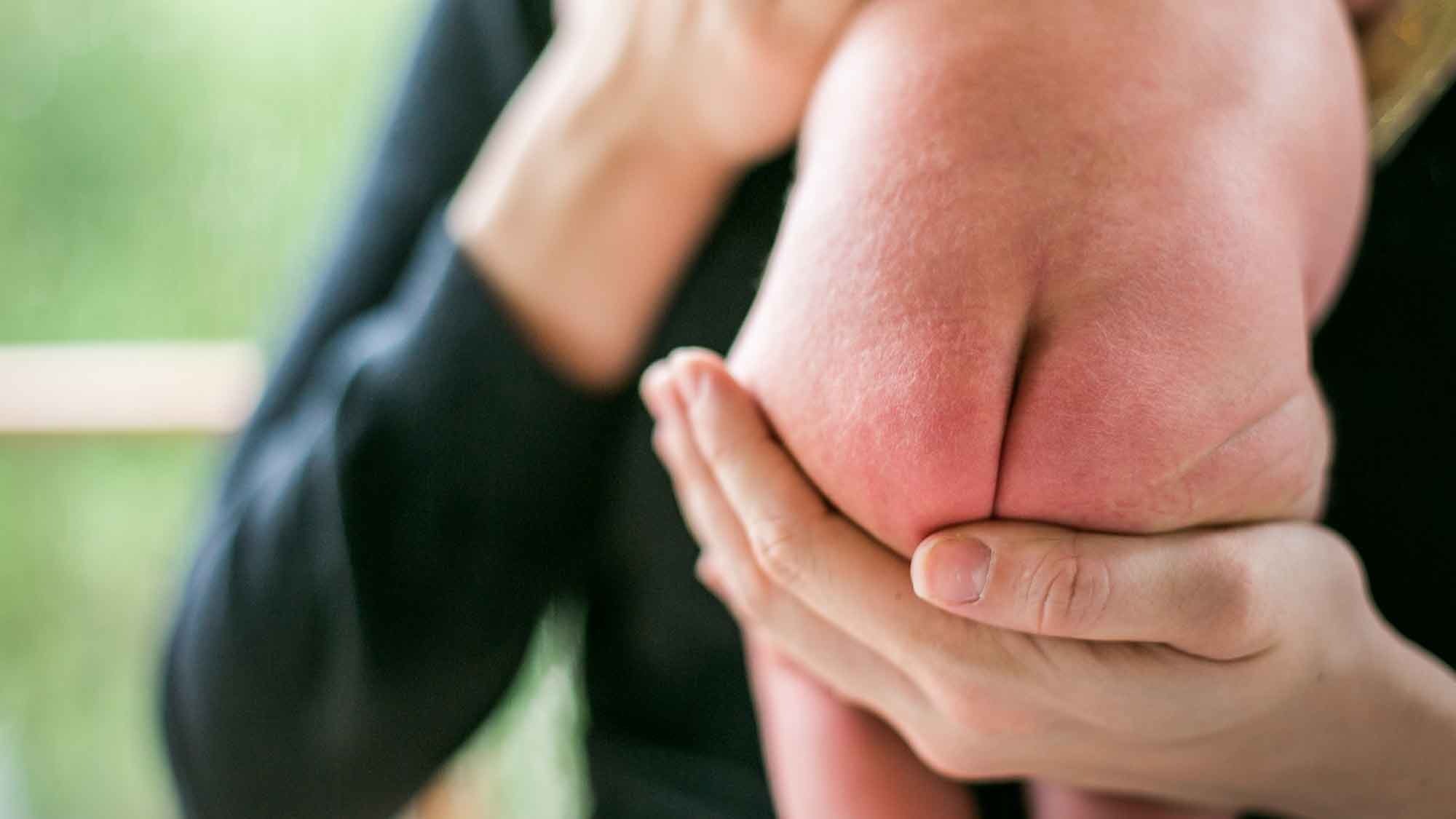
Innovative Treatments and Future Directions in Intertrigo Management
What new approaches are being explored for treating intertrigo? While current treatments are often effective, research continues to improve management strategies:
Emerging Therapies
- Novel antifungal and antibacterial agents with improved efficacy and fewer side effects
- Probiotics and prebiotics for topical use to promote healthy skin flora
- Advanced moisture-wicking fabrics for clothing and undergarments
- Photodynamic therapy for resistant cases
Future Research Directions
- Better understanding of the skin microbiome and its role in intertrigo
- Development of personalized treatment approaches based on individual skin characteristics
- Exploration of the genetic factors that may predispose individuals to intertrigo
- Investigation of potential links between intertrigo and systemic health conditions
As research progresses, we can anticipate more targeted and effective treatments for intertrigo, potentially improving outcomes and quality of life for those affected by this common skin condition.

Treatment, Signs, Pictures, and Prevention
Intertrigo is a skin condition that can occur anywhere on the body where skin touches skin. Medical treatment and at home prevention can help clear the rash and reduce irritation.
Skin conditions commonly affect the folds of the skin, especially when the skin is wet or sweaty. This can lead to irritation, inflammation, and even infection. Intertrigo, a common skin condition that can occur in the folds of the skin, is characterized by red, inflamed skin that may be itchy or painful.
The good news? With some know-how, you can often treat it at home and prevent it from returning. Here’s how to spot an intertrigo rash and what you can do about it at home and with a doctor’s help.
Intertrigo is a reddish rash that appears in skin folds, where your skin surfaces rub against each other. The rash can be itchy or painful, but it’s not contagious.
Bacteria, fungus, and viruses can easily grow in this warm and moist environment and worsen the rash.
The skin areas most often affected include your:
- armpits
- underneath and between breasts
- groin
- buttocks
- between toes
Friction from skin rubbing on skin, moisture, and higher temperature in flexural areas are the main factors in the development of intertrigo.
These areas are often moist, warm, and lack air exposure. This makes them perfect breeding areas for microorganisms. These bacteria or fungi worsen the rash and its symptoms.
Secondary intertrigo infections could include:
Fungi
Candida (a yeast) is the fungus group that’s most commonly associated with intertrigo. About 80% to 90% of all skin yeast infections are caused by Candida albicans (also called thrush).
Most people normally have some Candida albicans present on their skin, so the yeast can easily take advantage of skin breaks to proliferate. A Candida rash is very bright red and raw looking. It may have plaques, which are raised, scaly lesions. Papules and pustules (pimple-like bumps) may be present as well.
It may have plaques, which are raised, scaly lesions. Papules and pustules (pimple-like bumps) may be present as well.
Bacteria
Bacteria associated with intertrigo include:
- staphylococci
- streptococci
- Pseudomonas
- Corynebacterium
Viruses
The most common virus families associated with intertrigo are:
- Poxviridae
- Papillomaviridae (human papilloma virus or HPV)
- Picornaviridae
- Retroviridae (HIV)
- Herpesviridae
- Togaviridae
- Parvoviridae
In some cases, intertrigo occurs as a side effect of chemotherapy treatment.
Intertrigo starts as redness or small bumps or spots in skin folds. The rash can feel:
- itchy
- uncomfortable
- burning
- prickly
- painful
The intertrigo often appears on both sides of the skin fold, almost like a mirror image. Infections are more likely to be unilateral and asymmetrical, while inflammatory disorders tend to be symmetrical, appearing, for example, under both arms or both breasts.
The reddish area can quickly become inflamed and raw. The skin may crack, bleed, ooze, and crust over. The surrounding area may become scaly.
If you have a secondary infection from bacteria, fungus, or a virus, the intertrigo becomes more inflamed and can develop a bad smell. Intertrigo with a secondary infection is often asymmetrical (not even or present on both sides).
You may have intertrigo in more than one skin area. Also, smaller skin fold areas, such as behind your ears, around your chin, or on your eyelids, can be affected.
Intertrigo symptoms often get worse when the area comes in contact with your bodily secretions, such as sweat, urine, or feces.
Intertrigo is common and can occur at any age, but according to a 2014 article, it’s more common in the very young and in older people. In babies, intertrigo most often appears as diaper rash.
People with a weakened immune system or who are incontinent or immobile are more likely to have intertrigo. It’s also more common in hot and humid weather.
It’s also more common in hot and humid weather.
Treatment for intertrigo is usually a skin cream and a good home hygiene regimen to keep the area clean and dry. The type of topical drug depends on whether bacteria or yeast are involved. In more severe cases, you may need to take oral medication.
When intertrigo is inflammatory only, with no infection, treatment is straightforward: Keep the area clean and dry and follow some of the home remedy suggestions below.
There are also several solutions that may help to control intertrigo. A doctor may suggest:
- antiperspirants
- triple paste with zinc oxide, aluminum acetate, and petrolatum
- petroleum jelly (Vaseline)
- talcum powder
If you have an infection with the intertrigo, the doctor will prescribe specific topical creams.
Your treatment for intertrigo will depend on the cause and the type of infection you have. We’ll go over bacterial and yeast infections below.
In extreme cases, some women have undergone breast reduction surgery to reduce chronic intertrigo.
Keep it clean and dry
The number one rule is to keep the area clean and dry.
If you exercise, shower afterward and pat yourself dry. Don’t rub your skin, as this can cause increased irritation and damage to the skin.
Use anti-chafing or barrier gels
If the intertrigo is inflammatory only, without an infection, use over-the-counter (OTC) creams to create a barrier between the skin folds. Creams or ointments with zinc oxide or petrolatum can be useful. There are also anti-chafing balms that come in stick form.
Block the sweat
Use a mild antiperspirant to stop sweating, including under your breasts.
OTC antifungal creams
If you have a fungal infection, try using use an OTC antifungal cream on the affected area for 2 to 4 weeks.
Create a physical barrier
Depending on the affected area, use a thin cotton or gauze barrier to separate the skin folds.
Wear loose clothing and breathable fabrics
Wear loose cotton clothing next to your skin and avoid synthetic materials that can be irritating.
Topical antifungals used for intertrigo are nystatin (for Candida) and azole drugs, including miconazole (Mitrazol), ketoconazole (Nizoral topical), or clotrimazole (Lotrimin AF cream).
You usually use the cream twice a day for 2 to 4 weeks.
If your rash is very itchy, the doctor may also prescribe an antifungal combined with a low dose corticosteroid.
Depending on the severity of the infection, a doctor may prescribe a systemic antifungal drug that you’d take by mouth.
Topical antibiotics are used for bacterial infections. These include bacitracin or mupirocin (Bactroban).
If the infection is more severe, the doctor may prescribe an oral antibiotic, such as flucloxacillin or erythromycin (Erythrocin).
The doctor may also prescribe a low potency corticosteroid and advise you to use an antibiotic soap.
Intertrigo in babies requires special care because the affected skin area is so delicate. Keep the area clean, wash it gently with mild soap, and pat it dry.
Use an absorbent diaper and wrap it loosely. Consider changing diapers on a schedule to decrease the amount of time your baby is in a wet diaper. OTC creams, such as those with zinc oxide or petrolatum, may be useful.
If the diaper rash looks infected or doesn’t go away in a few days, see a doctor.
If you or your child have a skin rash that doesn’t go away or rapidly gets worse, it’s important to see a doctor. Skin rashes can have many causes and the treatment is often very specific. You should also see a doctor if the rash isn’t getting better with treatment.
Red rashes can have many different causes. The doctor will want to rule out other possibilities, such as psoriasis or allergic reactions.
If they suspect it’s intertrigo and infection, they’ll likely test for a fungal, bacterial, or viral cause. A doctor may take a skin scraping or swab of the rash to send to a lab for a culture. They may also look at it under a microscope or special lamp.
Few scientific studies of intertrigo have measured what preventive care works and what doesn’t. But there are measures you can take that may work for you:
But there are measures you can take that may work for you:
- Keep the skin area clean, dry, and aerated.
- Maintain a skin care routine of cleaning, moisturizing, and applying a skin barrier to protect the area.
- Use fragrance-free soaps and other skin products to minimize irritation.
- Use a powder, such as Zeasorb AF, on the area once or twice a day.
- Minimize exposure to sweat, urine, or feces. If you’re incontinent, use special products to absorb moisture.
- Use a dehumidifier if you live in humid conditions.
- Use an air conditioner to avoid being in high heat.
- If you have diabetes, keep it under control.
- Shower after exercise and dry off completely before dressing.
- Don’t wear tight clothing or shoes that can constrict the affected area. If your toes are affected, wear open-toe shoes.
- Wear loose clothing and breathable fabrics such as cotton.
Intertrigo doesn’t usually cause any complications, but it can lead to more serious infections if it isn’t treated properly.
Bacterial intertrigo can lead to cellulitis, which is a skin infection that can spread to the deeper layers of the skin and the lymph nodes. Cellulitis can be serious and may require hospitalization.
Fungal intertrigo can lead to a more serious infection such as candidemia, a condition in which the yeast infection spreads through the bloodstream. Candidemia can be life threatening.
Intertrigo can also worsen other skin conditions such as psoriasis, eczema, and dermatitis.
Anyone can get intertrigo, but some conditions can increase your risk. You’re more at risk if:
- you have a weakened immune system
- you have excess skin
- you have diabetes
- you have poor hygiene habits
- you’re immobile
- you’re incontinent
- you wear a splint, brace, or an artificial limb that rubs your skin
- you live or work in high heat and humidity
- you sweat excessively (hyperhidrosis)
- your clothing or shoes are too tight
- you have an inflammatory skin condition
Infants are also at a higher risk because their skin is more sensitive. They also tend to have skin rolling (like the folds of the neck) and are more likely to have damp skin from drooling and from wearing diapers.
They also tend to have skin rolling (like the folds of the neck) and are more likely to have damp skin from drooling and from wearing diapers.
Below are some frequently asked questions about intertrigo.
Does poor hygiene cause intertrigo?
Poor hygiene can cause or worsen intertrigo, but you can get intertrigo even if you practice good hygiene habits. It’s important to clean the affected area, but you also need to be careful not to irritate the skin.
What does intertrigo look like?
Intertrigo usually looks like a rash. The affected skin is usually red, inflamed, and moist. It can also be scaly, crusted, or have blisters. The rash often has well defined edges where it meets the surrounding skin.
Can tight clothing cause intertrigo?
Tight clothing can rub the skin and cause or worsen intertrigo. It’s best to wear loose fitting, breathable clothing made from natural fabrics, such as cotton.
Can I use over-the-counter (OTC) treatments for intertrigo?
OTC treatments, such as barrier creams and powders, can help treat intertrigo.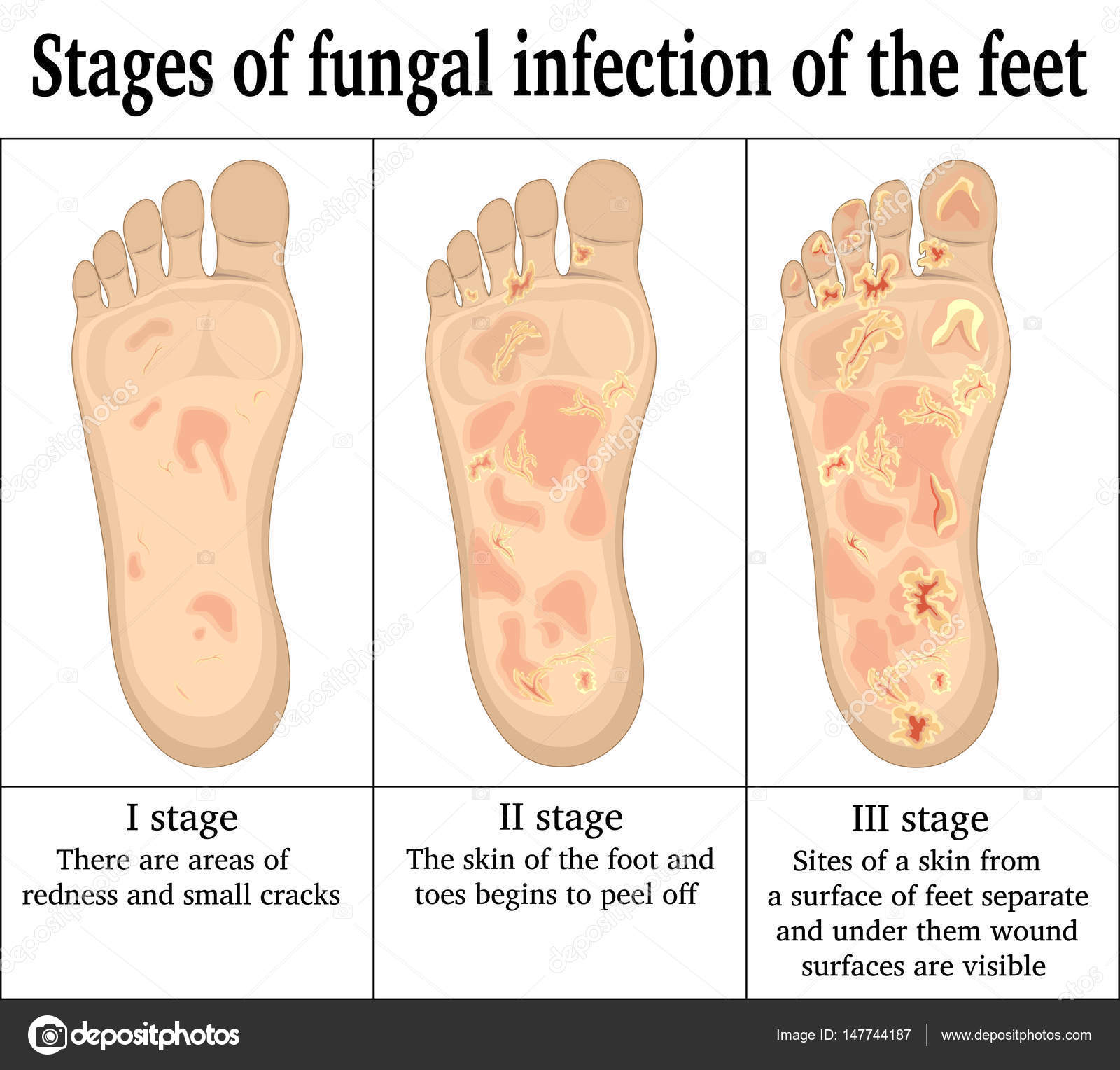 But if the rash doesn’t go away after a week or two, or if it gets worse, you should see a doctor. You should also see a doctor if you have any symptoms of a skin infection, such as redness, swelling, pain, pus, or fever.
But if the rash doesn’t go away after a week or two, or if it gets worse, you should see a doctor. You should also see a doctor if you have any symptoms of a skin infection, such as redness, swelling, pain, pus, or fever.
Intertrigo is a common and treatable condition. People with intertrigo who are otherwise healthy have a good outlook. If a secondary infection is involved, it’s important to treat the cause until the symptoms are gone.
In some cases, intertrigo can become chronic. Maintaining a good skin cleaning and moisturizing routine can help prevent intertrigo from coming back. Talk with a doctor if you have questions about your skin or if the rash doesn’t go away with self-care.
Treatment, Signs, Pictures, and Prevention
Intertrigo is a skin condition that can occur anywhere on the body where skin touches skin. Medical treatment and at home prevention can help clear the rash and reduce irritation.
Skin conditions commonly affect the folds of the skin, especially when the skin is wet or sweaty. This can lead to irritation, inflammation, and even infection. Intertrigo, a common skin condition that can occur in the folds of the skin, is characterized by red, inflamed skin that may be itchy or painful.
This can lead to irritation, inflammation, and even infection. Intertrigo, a common skin condition that can occur in the folds of the skin, is characterized by red, inflamed skin that may be itchy or painful.
The good news? With some know-how, you can often treat it at home and prevent it from returning. Here’s how to spot an intertrigo rash and what you can do about it at home and with a doctor’s help.
Intertrigo is a reddish rash that appears in skin folds, where your skin surfaces rub against each other. The rash can be itchy or painful, but it’s not contagious.
Bacteria, fungus, and viruses can easily grow in this warm and moist environment and worsen the rash.
The skin areas most often affected include your:
- armpits
- underneath and between breasts
- groin
- buttocks
- between toes
Friction from skin rubbing on skin, moisture, and higher temperature in flexural areas are the main factors in the development of intertrigo.
These areas are often moist, warm, and lack air exposure. This makes them perfect breeding areas for microorganisms. These bacteria or fungi worsen the rash and its symptoms.
Secondary intertrigo infections could include:
Fungi
Candida (a yeast) is the fungus group that’s most commonly associated with intertrigo. About 80% to 90% of all skin yeast infections are caused by Candida albicans (also called thrush).
Most people normally have some Candida albicans present on their skin, so the yeast can easily take advantage of skin breaks to proliferate. A Candida rash is very bright red and raw looking. It may have plaques, which are raised, scaly lesions. Papules and pustules (pimple-like bumps) may be present as well.
Bacteria
Bacteria associated with intertrigo include:
- staphylococci
- streptococci
- Pseudomonas
- Corynebacterium
Viruses
The most common virus families associated with intertrigo are:
- Poxviridae
- Papillomaviridae (human papilloma virus or HPV)
- Picornaviridae
- Retroviridae (HIV)
- Herpesviridae
- Togaviridae
- Parvoviridae
In some cases, intertrigo occurs as a side effect of chemotherapy treatment.:max_bytes(150000):strip_icc()/demodicosis--demodex-mite-532417627-80865e79f9f048cdb7be03803c8666be-4017e205192743ee9e88ec320505c3c9.jpg)
Intertrigo starts as redness or small bumps or spots in skin folds. The rash can feel:
- itchy
- uncomfortable
- burning
- prickly
- painful
The intertrigo often appears on both sides of the skin fold, almost like a mirror image. Infections are more likely to be unilateral and asymmetrical, while inflammatory disorders tend to be symmetrical, appearing, for example, under both arms or both breasts.
The reddish area can quickly become inflamed and raw. The skin may crack, bleed, ooze, and crust over. The surrounding area may become scaly.
If you have a secondary infection from bacteria, fungus, or a virus, the intertrigo becomes more inflamed and can develop a bad smell. Intertrigo with a secondary infection is often asymmetrical (not even or present on both sides).
You may have intertrigo in more than one skin area. Also, smaller skin fold areas, such as behind your ears, around your chin, or on your eyelids, can be affected.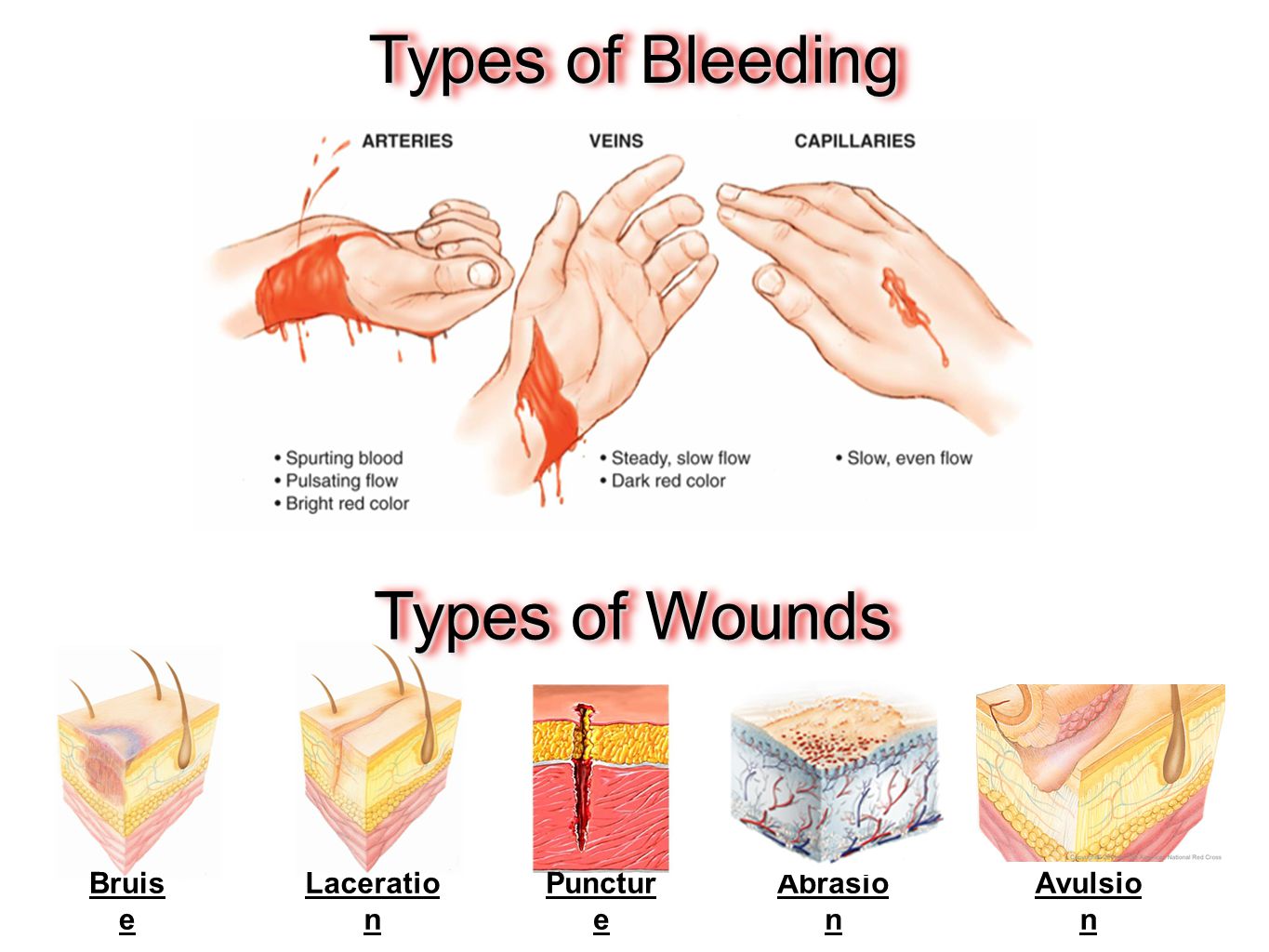
Intertrigo symptoms often get worse when the area comes in contact with your bodily secretions, such as sweat, urine, or feces.
Intertrigo is common and can occur at any age, but according to a 2014 article, it’s more common in the very young and in older people. In babies, intertrigo most often appears as diaper rash.
People with a weakened immune system or who are incontinent or immobile are more likely to have intertrigo. It’s also more common in hot and humid weather.
Treatment for intertrigo is usually a skin cream and a good home hygiene regimen to keep the area clean and dry. The type of topical drug depends on whether bacteria or yeast are involved. In more severe cases, you may need to take oral medication.
When intertrigo is inflammatory only, with no infection, treatment is straightforward: Keep the area clean and dry and follow some of the home remedy suggestions below.
There are also several solutions that may help to control intertrigo. A doctor may suggest:
A doctor may suggest:
- antiperspirants
- triple paste with zinc oxide, aluminum acetate, and petrolatum
- petroleum jelly (Vaseline)
- talcum powder
If you have an infection with the intertrigo, the doctor will prescribe specific topical creams.
Your treatment for intertrigo will depend on the cause and the type of infection you have. We’ll go over bacterial and yeast infections below.
In extreme cases, some women have undergone breast reduction surgery to reduce chronic intertrigo.
Keep it clean and dry
The number one rule is to keep the area clean and dry.
If you exercise, shower afterward and pat yourself dry. Don’t rub your skin, as this can cause increased irritation and damage to the skin.
Use anti-chafing or barrier gels
If the intertrigo is inflammatory only, without an infection, use over-the-counter (OTC) creams to create a barrier between the skin folds. Creams or ointments with zinc oxide or petrolatum can be useful. There are also anti-chafing balms that come in stick form.
There are also anti-chafing balms that come in stick form.
Block the sweat
Use a mild antiperspirant to stop sweating, including under your breasts.
OTC antifungal creams
If you have a fungal infection, try using use an OTC antifungal cream on the affected area for 2 to 4 weeks.
Create a physical barrier
Depending on the affected area, use a thin cotton or gauze barrier to separate the skin folds.
Wear loose clothing and breathable fabrics
Wear loose cotton clothing next to your skin and avoid synthetic materials that can be irritating.
Topical antifungals used for intertrigo are nystatin (for Candida) and azole drugs, including miconazole (Mitrazol), ketoconazole (Nizoral topical), or clotrimazole (Lotrimin AF cream).
You usually use the cream twice a day for 2 to 4 weeks.
If your rash is very itchy, the doctor may also prescribe an antifungal combined with a low dose corticosteroid.
Depending on the severity of the infection, a doctor may prescribe a systemic antifungal drug that you’d take by mouth.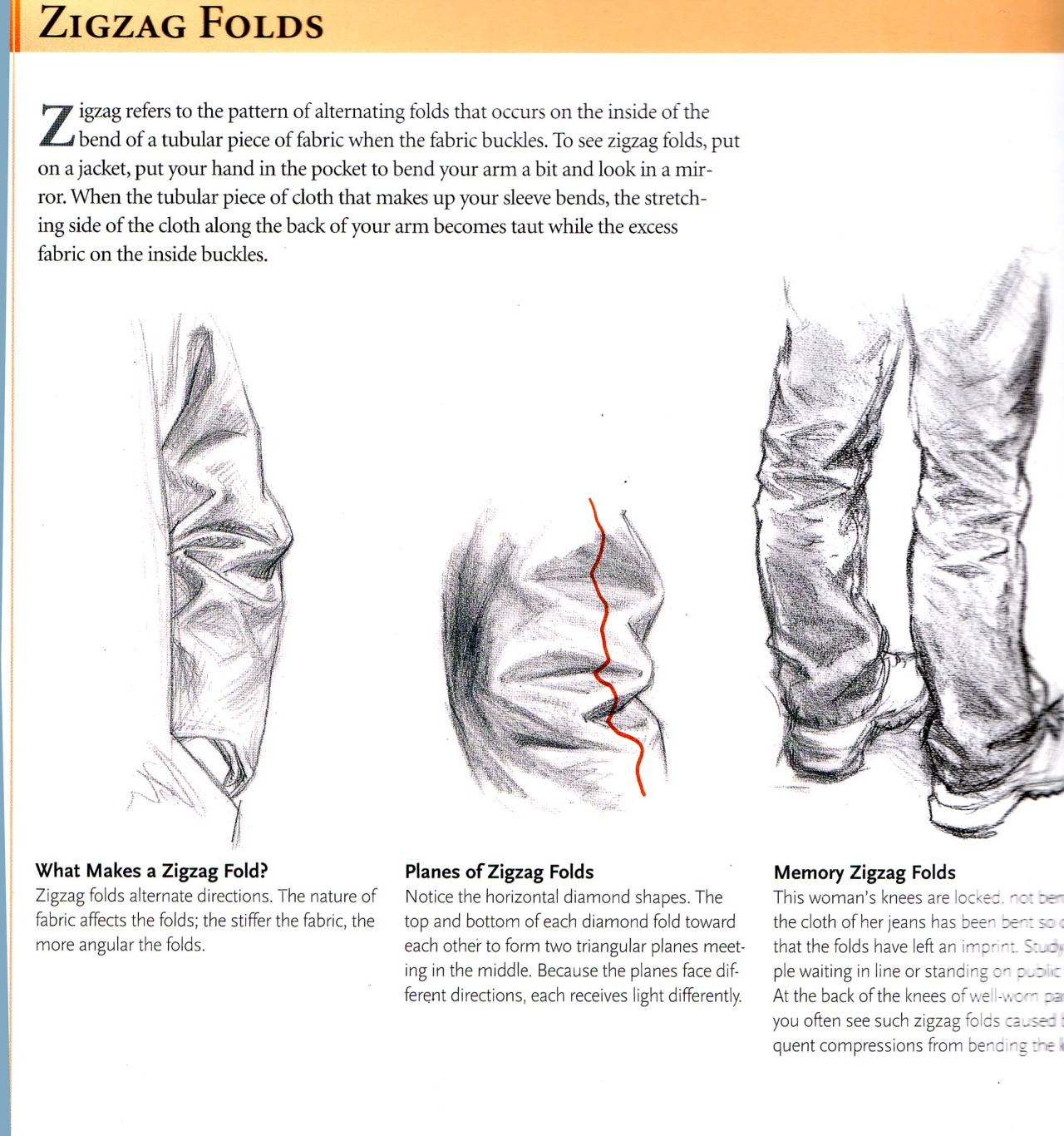
Topical antibiotics are used for bacterial infections. These include bacitracin or mupirocin (Bactroban).
If the infection is more severe, the doctor may prescribe an oral antibiotic, such as flucloxacillin or erythromycin (Erythrocin).
The doctor may also prescribe a low potency corticosteroid and advise you to use an antibiotic soap.
Intertrigo in babies requires special care because the affected skin area is so delicate. Keep the area clean, wash it gently with mild soap, and pat it dry.
Use an absorbent diaper and wrap it loosely. Consider changing diapers on a schedule to decrease the amount of time your baby is in a wet diaper. OTC creams, such as those with zinc oxide or petrolatum, may be useful.
If the diaper rash looks infected or doesn’t go away in a few days, see a doctor.
If you or your child have a skin rash that doesn’t go away or rapidly gets worse, it’s important to see a doctor. Skin rashes can have many causes and the treatment is often very specific. You should also see a doctor if the rash isn’t getting better with treatment.
You should also see a doctor if the rash isn’t getting better with treatment.
Red rashes can have many different causes. The doctor will want to rule out other possibilities, such as psoriasis or allergic reactions.
If they suspect it’s intertrigo and infection, they’ll likely test for a fungal, bacterial, or viral cause. A doctor may take a skin scraping or swab of the rash to send to a lab for a culture. They may also look at it under a microscope or special lamp.
Few scientific studies of intertrigo have measured what preventive care works and what doesn’t. But there are measures you can take that may work for you:
- Keep the skin area clean, dry, and aerated.
- Maintain a skin care routine of cleaning, moisturizing, and applying a skin barrier to protect the area.
- Use fragrance-free soaps and other skin products to minimize irritation.
- Use a powder, such as Zeasorb AF, on the area once or twice a day.
- Minimize exposure to sweat, urine, or feces.
 If you’re incontinent, use special products to absorb moisture.
If you’re incontinent, use special products to absorb moisture. - Use a dehumidifier if you live in humid conditions.
- Use an air conditioner to avoid being in high heat.
- If you have diabetes, keep it under control.
- Shower after exercise and dry off completely before dressing.
- Don’t wear tight clothing or shoes that can constrict the affected area. If your toes are affected, wear open-toe shoes.
- Wear loose clothing and breathable fabrics such as cotton.
Intertrigo doesn’t usually cause any complications, but it can lead to more serious infections if it isn’t treated properly.
Bacterial intertrigo can lead to cellulitis, which is a skin infection that can spread to the deeper layers of the skin and the lymph nodes. Cellulitis can be serious and may require hospitalization.
Fungal intertrigo can lead to a more serious infection such as candidemia, a condition in which the yeast infection spreads through the bloodstream. Candidemia can be life threatening.
Candidemia can be life threatening.
Intertrigo can also worsen other skin conditions such as psoriasis, eczema, and dermatitis.
Anyone can get intertrigo, but some conditions can increase your risk. You’re more at risk if:
- you have a weakened immune system
- you have excess skin
- you have diabetes
- you have poor hygiene habits
- you’re immobile
- you’re incontinent
- you wear a splint, brace, or an artificial limb that rubs your skin
- you live or work in high heat and humidity
- you sweat excessively (hyperhidrosis)
- your clothing or shoes are too tight
- you have an inflammatory skin condition
Infants are also at a higher risk because their skin is more sensitive. They also tend to have skin rolling (like the folds of the neck) and are more likely to have damp skin from drooling and from wearing diapers.
Below are some frequently asked questions about intertrigo.
Does poor hygiene cause intertrigo?
Poor hygiene can cause or worsen intertrigo, but you can get intertrigo even if you practice good hygiene habits. It’s important to clean the affected area, but you also need to be careful not to irritate the skin.
It’s important to clean the affected area, but you also need to be careful not to irritate the skin.
What does intertrigo look like?
Intertrigo usually looks like a rash. The affected skin is usually red, inflamed, and moist. It can also be scaly, crusted, or have blisters. The rash often has well defined edges where it meets the surrounding skin.
Can tight clothing cause intertrigo?
Tight clothing can rub the skin and cause or worsen intertrigo. It’s best to wear loose fitting, breathable clothing made from natural fabrics, such as cotton.
Can I use over-the-counter (OTC) treatments for intertrigo?
OTC treatments, such as barrier creams and powders, can help treat intertrigo. But if the rash doesn’t go away after a week or two, or if it gets worse, you should see a doctor. You should also see a doctor if you have any symptoms of a skin infection, such as redness, swelling, pain, pus, or fever.
Intertrigo is a common and treatable condition. People with intertrigo who are otherwise healthy have a good outlook. If a secondary infection is involved, it’s important to treat the cause until the symptoms are gone.
People with intertrigo who are otherwise healthy have a good outlook. If a secondary infection is involved, it’s important to treat the cause until the symptoms are gone.
In some cases, intertrigo can become chronic. Maintaining a good skin cleaning and moisturizing routine can help prevent intertrigo from coming back. Talk with a doctor if you have questions about your skin or if the rash doesn’t go away with self-care.
diagnostics, clinic, rational external therapy
Large fold dermatosis (CLD) is a group of diseases united according to the principle of selective localization on the skin. This group includes dermatoses that have different etiology and pathogenesis, but have clinical similarities that create difficulties for timely diagnosis and choice of rational therapy.
Downstream, these dermatoses can be divided into acute and chronic, in some of them large folds are selectively affected, while in most cases such dermatoses can manifest as a combined lesion of various parts of the skin and mucous membranes.
DCS often occur with the loss of those personality traits that are characteristic of the localization of the process on smooth skin, scalp, mucous membranes, etc., which creates a deceptive similarity in the clinical manifestations of skin diseases of various etiologies. The complexity of timely diagnosis is aggravated by the localization of the process in closed, sometimes difficult to access areas, false modesty of patients or inattentive examination by a doctor [1].
The skin of large folds has the following individual characteristics:
1. Constantly rubbed and macerated.
2. Hypersecretion of sweat glands increases the pH of the skin folds (the environment becomes alkaline), which affects the microbial flora, leading to the activation, primarily of opportunistic microorganisms [2].
3. Insufficient aeration creates the prerequisites for the transition of opportunistic flora into pathogenic (first of all, this applies to yeast infection, as well as pyogenic coccal flora). In this case, the greatest risk group is made up of patients with diabetes mellitus, patients suffering from impaired thyroid function, etc. [3].
In this case, the greatest risk group is made up of patients with diabetes mellitus, patients suffering from impaired thyroid function, etc. [3].
4. The anatomical structure and functions of the sebaceous and sweat glands in large folds also differ in originality, depending on the need to create easier sliding, stretching of the contacting surfaces in order to avoid friction, dryness, and limitation of mobility.
5. Apocrine sweat glands of large folds have relatively short and wide ducts, and their glomeruli, additionally connected by fibrous structures, are deeply immersed in loose subcutaneous fat.
6. The architectonics of collagen and elastic fibers gives a greater ability to stretch the skin of the folds compared to other areas of the skin.
7. The sebaceous glands function with a lesser load, since here the glands have only 1-2 lobules, in contrast to the 3-lobed glands on the scalp, facial skin in the region of the tip of the nose and chin [4].
These factors increase desquamation, desquamation of the stratum corneum of the epidermis, on the one hand, thinning it and making it more elastic, on the other hand, exposing it and making it impossible to serve as a barrier to pathogenic microorganisms and harmful chemicals. It should be noted the influence of various chemicals with water- and fat-soluble properties. Mixing with sebum and sweat, changing their chemical composition, both with external contact and with the penetration of the allergen into the skin, chemicals create conditions for additional irritation of the skin of large folds, which is especially evident in allergic dermatitis, toxicoderma, eczema [5] .
It should be noted the influence of various chemicals with water- and fat-soluble properties. Mixing with sebum and sweat, changing their chemical composition, both with external contact and with the penetration of the allergen into the skin, chemicals create conditions for additional irritation of the skin of large folds, which is especially evident in allergic dermatitis, toxicoderma, eczema [5] .
The approach to the treatment of DCS makes it necessary to take into account the localization, etiology and nature of the course of the disease: a combination of edema, maceration with exudation in acute inflammatory processes, dryness, infiltration with possible cracking of the skin in the depth of the fold in the chronic course of dermatosis, easy accession of a secondary infection. All this forces doctors to use step by step external means of drying anti-inflammatory, epithelizing and softening action. At the same time, the appointment of various forms, control over their correct use, inconvenience associated with the use of products that color linen and clothes create difficulties for the doctor and patient.
Currently developed and widely used in external therapy corticosteroid preparations of the company “Schering-Plough” (USA): elocom and triderm in various dosage forms. The therapeutic efficacy and safety of these drugs are very high, and the list of dermatoses in which it is advisable to use these drugs is also diverse.
In this report, we have included dermatoses that differ from each other in etiology and pathogenesis, but with a similar clinical picture, therefore, external therapy with creams seems to be quite justified elokom and triderm .
Elokom contains mometasone furoate as an active ingredient, which is a synthetic corticosteroid with anti-inflammatory, antipruritic and vasoconstrictive properties. Mometasone furoate is one of the safest topical glucocorticosteroids (TGCS) with minimal systemic bioavailability (0.4% for cream and 0.7% for ointment). These qualities are due to the presence of a predominantly extragenomic mechanism of action in mometasone furoate. If the genomic effect that prevails in most other TGCS is the formation of a glucocorticoid-glucocorticoid receptor complex, which in turn activates the expression of genes responsible for the synthesis of anti-inflammatory antigens, then the extra-genomic mechanism recently discovered by researchers includes direct inhibition of pro-inflammatory transcription factors by glucocorticoid-glucocorticoid receptor complexes. antigens. At the same time, the anti-inflammatory effect develops faster, and the effect on the genome is minimized, which determines the high safety profile of the drug elokom .
If the genomic effect that prevails in most other TGCS is the formation of a glucocorticoid-glucocorticoid receptor complex, which in turn activates the expression of genes responsible for the synthesis of anti-inflammatory antigens, then the extra-genomic mechanism recently discovered by researchers includes direct inhibition of pro-inflammatory transcription factors by glucocorticoid-glucocorticoid receptor complexes. antigens. At the same time, the anti-inflammatory effect develops faster, and the effect on the genome is minimized, which determines the high safety profile of the drug elokom .
Triderm contains betamethasone dipropionate TGCS 0.05%, antibiotic gentamicin sulfate 0.1% and clotrimazole 1% as an antimycotic substance. It should be noted that clotrimazole, in addition to its own antifungal action, is able to have an antimicrobial effect against a number of microorganisms, allowing potentiating the action of gentamicin.
Simple contact dermatitis due to physical factors such as friction, pressure, less commonly obligate chemicals is very common.:max_bytes(150000):strip_icc()/skin-anatomy-1068880_review-01-9adf9daebac8464eb693274a960bd850.png) Dermatitis can occur in children, especially at an early age as a variant of diaper rash or the so-called diaper dermatitis. Clinically, the disease manifests itself as a bright inflammatory erythema with clear boundaries, less often with the addition of an exudative component in the form of edema and maceration. A particularly important factor is that powders, water- and oil-shaken creams, which were previously used to treat such manifestations, have now lost their value. Now, after using cream 9 for 2-3 days0029 elokom (a topical steroid approved for use without age restrictions), inflammatory changes can be quickly extinguished and relapses can be avoided if the necessary hygiene measures are observed.
Dermatitis can occur in children, especially at an early age as a variant of diaper rash or the so-called diaper dermatitis. Clinically, the disease manifests itself as a bright inflammatory erythema with clear boundaries, less often with the addition of an exudative component in the form of edema and maceration. A particularly important factor is that powders, water- and oil-shaken creams, which were previously used to treat such manifestations, have now lost their value. Now, after using cream 9 for 2-3 days0029 elokom (a topical steroid approved for use without age restrictions), inflammatory changes can be quickly extinguished and relapses can be avoided if the necessary hygiene measures are observed.
Allergic DKS, which occurs more often under the action of facultative irritants of a chemical nature (cosmetics and perfumes, household chemicals, etc.), is usually accompanied by a clinical picture that is much more pronounced in severity compared to that in dermatosis of other areas of the skin. Erythema, edema, vesiculation in allergic dermatitis, similar to an eczematous process or drug-induced toxicoderma, form a torpid course of the disease when localized in large folds (Fig. 1). Figure 1. Dermatitis. The clinical picture of these dermatoses is dominated by polymorphic rashes grouped into foci without clear boundaries, often spreading to areas remote from the place of contact with the allergen [6]. General desensitizing therapy gives a relatively quick resolution of the process on smooth skin, while in large folds the rash fades more slowly, which is associated with the above features of these zones. In this case, external therapy using cream elokom will be justified and effective. Often, the chronization of the process in microbial, less often true eczema, especially when the affected area is the inguinal-femoral, perianal, and in men the inguinal-scrotal folds, makes it necessary to use cream triderm to prevent the attachment of a secondary infection (microbial and yeast).
Erythema, edema, vesiculation in allergic dermatitis, similar to an eczematous process or drug-induced toxicoderma, form a torpid course of the disease when localized in large folds (Fig. 1). Figure 1. Dermatitis. The clinical picture of these dermatoses is dominated by polymorphic rashes grouped into foci without clear boundaries, often spreading to areas remote from the place of contact with the allergen [6]. General desensitizing therapy gives a relatively quick resolution of the process on smooth skin, while in large folds the rash fades more slowly, which is associated with the above features of these zones. In this case, external therapy using cream elokom will be justified and effective. Often, the chronization of the process in microbial, less often true eczema, especially when the affected area is the inguinal-femoral, perianal, and in men the inguinal-scrotal folds, makes it necessary to use cream triderm to prevent the attachment of a secondary infection (microbial and yeast). The combination of antimycotic, antimicrobial and anti-inflammatory effects creates a high therapeutic activity to stop these appearances in a short time, restoring health and aesthetic comfort to patients.
The combination of antimycotic, antimicrobial and anti-inflammatory effects creates a high therapeutic activity to stop these appearances in a short time, restoring health and aesthetic comfort to patients.
Lesions of large folds by yeast fungi have a rather diverse clinical picture. Arising on the skin under the mammary glands, under the abdomen, in the umbilical and inguinal folds, lesions caused by fungi of the genus Candida and others can manifest as diffuse erythema, micropapular and microvesicular elements. In the latter case, along the periphery of the focus, as a result of the fusion of individual microvesicular elements and their opening, a finely scalloped edge of the exfoliated epidermis is formed, extending beyond the fold, onto smooth skin, and in the depth of the fold, one can see a whitish cheesy plaque as a narrow strip located on the erosive surface (Fig. 2 ).Figure 2. Candidiasis. Subjective sensations in the form of itching, of course, aggravate the course of dermatosis, since in order to stop these sensations, patients resort to more frequent hygiene procedures, the use of alcohol solutions, which give only a short-term effect.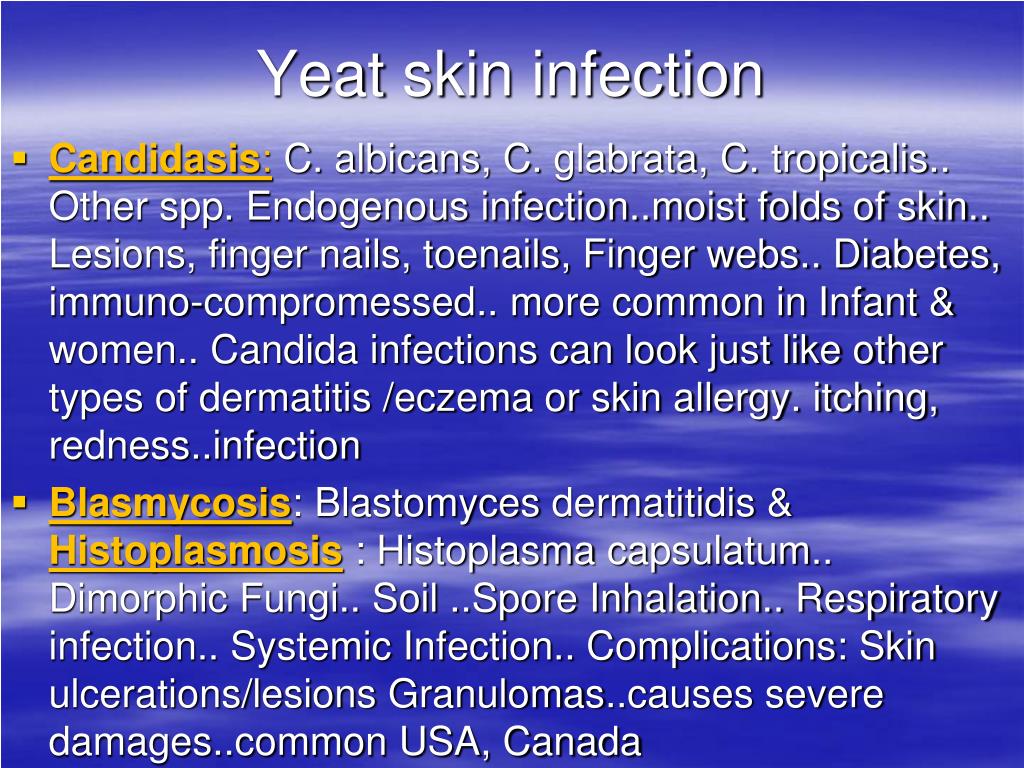 Cream therapy triderm yeast intertrigo, especially with the involvement of large folds in the process, allows to achieve clinical recovery in the initial stage of the disease, and with a significant prevalence and prescription of the process, reduce the treatment time, reduce negative subjective feelings.
Cream therapy triderm yeast intertrigo, especially with the involvement of large folds in the process, allows to achieve clinical recovery in the initial stage of the disease, and with a significant prevalence and prescription of the process, reduce the treatment time, reduce negative subjective feelings.
Selective damage to the inguinal folds is characteristic of true (inguinal) epidermophytosis. This disease, belonging to the group of dermatophytosis, is characterized by initial clinical manifestations in the form of a hyperemic edematous spot in the depth of the inguinal fold or on the lateral surface of the thigh, closer to the fold. The process can begin as one-sided, further taking on a symmetrical character and a tendency to spread to adjacent areas of the skin in the vicinity of the inguinal folds. Peripheral growth at first bright, then acquiring a stagnant edematous spot, is subsequently accompanied by peeling in its central part, with edema, hyperemia and microvesiculation in the peripheral zone – in the growth zone.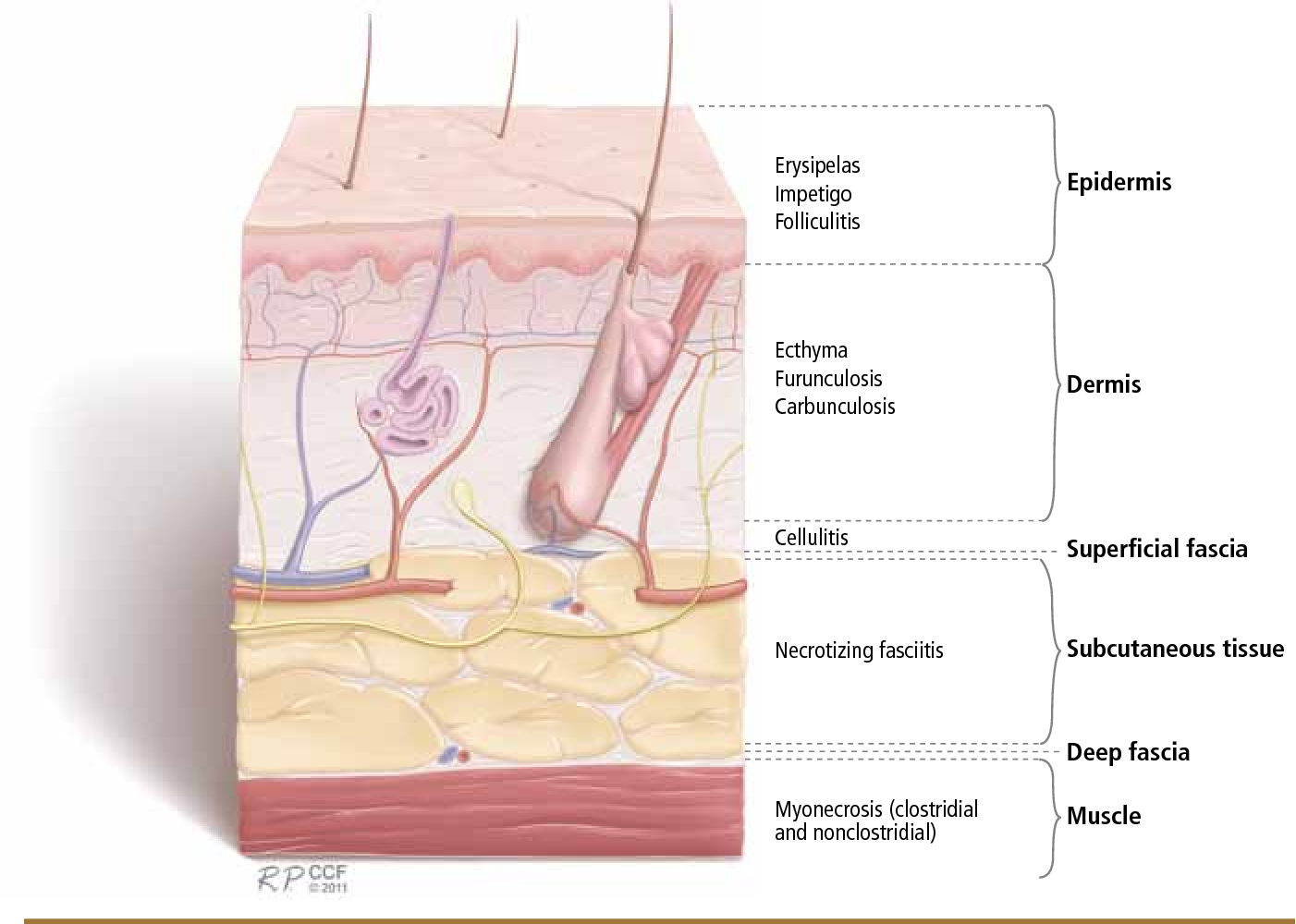 This gives the hearth a scalloped, often garland-like appearance. Severe itching often transforms into a burning sensation, soreness, especially when rubbed with clothes or washed with soap. It is these pain sensations in the acute stage of the disease that reduce the ability to use traditional external fungicides, which cause additional discomfort. Use of an easily absorbed cream or ointment triderm , which have a delicate texture, the combined action of the anti-inflammatory fungicidal and antimicrobial components allow within 2 days to reduce the inflammatory reaction, get rid of discomfort and provide an opportunity to use irritating concentrated fungicidal agents or combine the further use of ointment triderm with systemic antimycotic drugs up to complete cure.
This gives the hearth a scalloped, often garland-like appearance. Severe itching often transforms into a burning sensation, soreness, especially when rubbed with clothes or washed with soap. It is these pain sensations in the acute stage of the disease that reduce the ability to use traditional external fungicides, which cause additional discomfort. Use of an easily absorbed cream or ointment triderm , which have a delicate texture, the combined action of the anti-inflammatory fungicidal and antimicrobial components allow within 2 days to reduce the inflammatory reaction, get rid of discomfort and provide an opportunity to use irritating concentrated fungicidal agents or combine the further use of ointment triderm with systemic antimycotic drugs up to complete cure.
Similar to inguinal epidermophytosis, mycosis of smooth skin caused by fungus 9 has a picture0029 Tr. rubrum (Fig. 3). Figure 3. Mycosis of smooth skin caused by Tr. rubrum. Erythematosquamous foci predominate with small nodular, rarely vesicular rash along the periphery of the foci. Usually, the growth of the focus with rubromycosis goes from the lower leg to the thigh and only then to the inguinal folds, i.e. in the direction opposite to that of inguinal epidermophytosis.
Usually, the growth of the focus with rubromycosis goes from the lower leg to the thigh and only then to the inguinal folds, i.e. in the direction opposite to that of inguinal epidermophytosis.
The stability and capriciousness of the course of the disease in rubromycosis necessitates persistent treatment with local and systemic antimycotic agents, however, in case of an exudative form or in case of complications with eczematization, it is possible to use a cream triderm , which will reduce the risk of transformation of the process into microbial (mycotic eczema).
Streptococcal intertrigo is a relatively rare type of acute streptoderma that affects large folds. It occurs mainly in children, less often in adults, the favorite area is behind the ears, folds of the lateral surface of the neck in newborns. Perhaps the accession of streptococcal impetigo to itchy dermatoses (scabies). The defeat of large folds by streptococcal infection in adults develops against the background of somatic burden – in violation of carbohydrate metabolism, a decrease in the function of the immune system.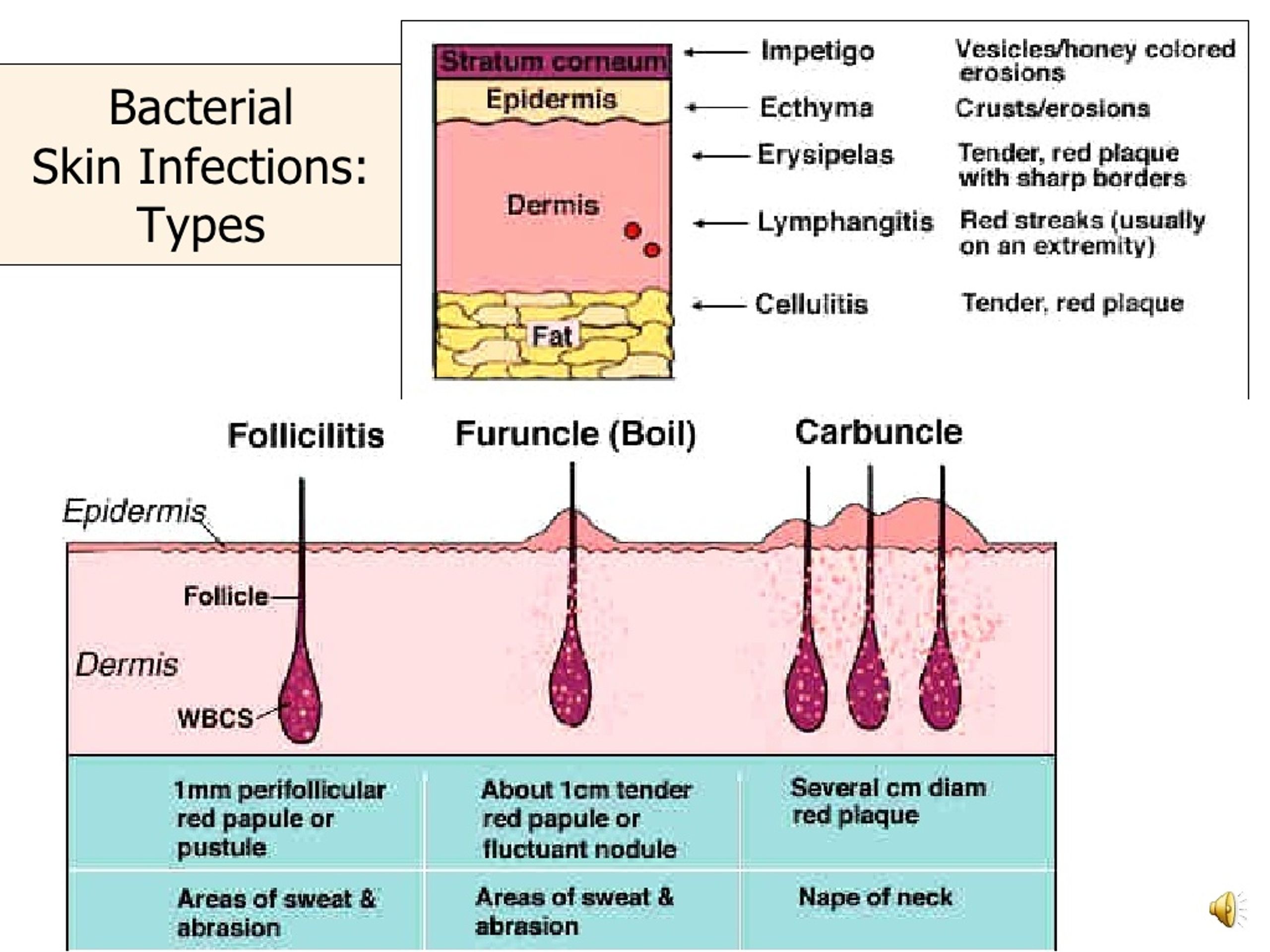 The conflicts arising from streptococcal intertrigo of large folds, quickly opening as a result of friction, form erosive foci of polycyclic outlines. A significant amount of serous exudate is separated from the surface of erosions, additionally macerating the erosive surface and the skin around the focus. Wet-drying dressings with disinfectant solutions can be successfully replaced with cream triderm with a further transition to ointments with antibiotics and sulfonamides.
The conflicts arising from streptococcal intertrigo of large folds, quickly opening as a result of friction, form erosive foci of polycyclic outlines. A significant amount of serous exudate is separated from the surface of erosions, additionally macerating the erosive surface and the skin around the focus. Wet-drying dressings with disinfectant solutions can be successfully replaced with cream triderm with a further transition to ointments with antibiotics and sulfonamides.
Psoriasis of large folds has its own clinical features. This type of psoriasis vulgaris or exudative psoriasis often occurs in patients with obesity, diabetes mellitus, and thyroid pathology. In the folds, bright red plaques with a shiny, as if varnished surface, clearly demarcated from healthy skin, often appear symmetrically; in the depth of the fold along the line of skin tension, painful deep cracks often appear, indicating infiltration in the lesion. As a rule, there is no peeling of the skin in the area of the rash, since the scales are easily torn off due to exudative changes and friction of the contacting surfaces (Fig. 4). Figure 4. Psoriasis. This clinical picture is very similar to yeast, streptococcal diaper rash. To suppress the exudative inflammatory reaction in the first 7-10 days, it is advisable to apply a cream on the lesions, and then an ointment elokom , then switching to absorbable ointments.
4). Figure 4. Psoriasis. This clinical picture is very similar to yeast, streptococcal diaper rash. To suppress the exudative inflammatory reaction in the first 7-10 days, it is advisable to apply a cream on the lesions, and then an ointment elokom , then switching to absorbable ointments.
Treatment of bullous dermatoses is largely determined by the combination of general therapy, including primarily glucocorticoid hormones, with topical therapy. Since the introduction into practice of dermatologists of TGCS, the treatment of patients with true pemphigus (Fig. 5), Figure 5. True pemphigus (vulgar). bullous pemphigoid (Fig. 6), Figure 6. Bullous pemphigoid. Dermatitis herpetiformis Duhring (Fig. 7) Figure 7. Dermatitis herpetiformis Duhring. became more effective, facilitating the work of the doctor and the patient’s condition. The main feature of this group of dermatoses is the appearance of blisters, and then long-term non-healing erosions. In large folds, epithelialization is especially slow, despite massive steroid hormone therapy. With all varieties of true pemphigus, bullous pemphigoid, benign familial pemphigus Gougereau-Hailey-Hailey (Fig. 8) Figure 8. Gougereau-Hailey-Hailey disease. selection of external medicines presents significant difficulties [7].
With all varieties of true pemphigus, bullous pemphigoid, benign familial pemphigus Gougereau-Hailey-Hailey (Fig. 8) Figure 8. Gougereau-Hailey-Hailey disease. selection of external medicines presents significant difficulties [7].
Currently, cream and ointment triderm or elocom can be used as initial, and in some cases basic external therapy. So, for a long time, it is possible to quite successfully maintain a stable remission in patients with benign familial pemphigus Gougereau-Hailey-Hailey, recommending them to take restorative agents in combination with the external use of cream triderm .
Thus, the introduction of various dosage forms into the practice of dermatologists triderma and elocoma with unique properties of GCS molecules and a balanced composition of active substances made it possible to determine the choice of external agents for the treatment of DCS in favor of these drugs. Their pharmacological properties and therapeutic profile allow the practitioner to make a justified choice in solving the problem of “efficacy or safety?”, which always arises when it is necessary to prescribe TGCS therapy, including in children.
Skin diseases
Skin diseases have more than a hundred types and categories. The most dangerous dermatologists call viral and fungal skin infections, dermatitis, scabies, melanoma and non-melanoma skin cancer, psoriasis, urticaria, pyoderma, acne, bedsores, alopecia areata.
Analyzes
Antibodies to the basement membrane of the epidermis
5-6 days (except Saturday, Sunday)
from 1 975 ₽
Add to cart epidermal catfish
5-6 days (except Saturday, Sunday)
from 1 975 ₽
Add to cart
Antibodies to desmoglein 1 (pemphigus foliaceus) )
from 2 120 ₽
Add to cart
Antibodies to desmoglein 3 (pemphigus vulgaris)
7 days (except Saturday, Sunday)
0 (bullous pemphigoid)
7 days (except Saturday , Sundays)
from 2 120 ₽
Add to cart
Antibodies to protein BP 230 (pemphigoid)
7 days (except Saturday, Sunday)
from 2 120 ₽
Add to cart
In the US and Europe, skin diseases are in 4th place in terms of the number of disabilities received. Therefore, one should not underestimate a variety of rashes, itching, pain, discoloration of the skin, peeling – for any deviations from the norm, especially not passing for a long time, you need to contact a specialist.
Therefore, one should not underestimate a variety of rashes, itching, pain, discoloration of the skin, peeling – for any deviations from the norm, especially not passing for a long time, you need to contact a specialist.
For extensive pruritus, a general practitioner is usually consulted; for localized itching or rashes, a dermatologist is usually consulted. If necessary, they write out a referral to narrow specialists – a dermatovenereologist (skin diseases caused by STIs), a trichologist (skin problems of the scalp), a dermatocosmetologist (aesthetic skin problems).
Often, skin problems signal diseases of other organs, and then dermatologists work together with endocrinologists, hematologists, oncologists, gynecologists, allergists and other specialists.
When are skin tests ordered?
Normally, the skin is evenly colored, moderately moist, smooth. If some indicator changes, the changes bring obvious discomfort, the symptoms do not go away for a long time, you should consult a doctor.
The skin is heterogeneous, and diseases affect its different layers: psoriasis and scabies – the epidermis, furunculosis – the dermis, cellulite – subcutaneous fat, etc. The first stage of any study is the examination and questioning of a person, then based on the primary external signs and the information obtained the doctor decides which tests the patient needs to pass in order to diagnose the disease. An oral survey reveals the duration of the condition, the reasons – according to the patient, regularity (whether it was like this before or for the first time), symptoms of the general condition, the presence of chronic diseases and illnesses in relatives, colleagues, dietary habits, living and working conditions, etc.
The specialist makes a visual examination and, if necessary, will prescribe tests:
- with a variety of rashes in the natural folds of the skin, on the scalp, neck, face;
- with small whitish scales in the area of the nasolabial triangle, on the scalp, on the back, under the armpits, in other places;
- with itching, burning;
- when plaques covered with scales appear, usually on the knee and elbow bends, in the places where the joints are allocated, on the palms, soles, on the scalp;
- with bruising, swelling, ulcers;
- with the appearance of papillomas;
- upon detection of spots of unknown origin;
- with acne, pimples and other deviations of the skin from the norm;
- with some non-specific symptoms.

Types of diagnostics of skin diseases
1. Complete blood count
- according to leukocytes, leukocyte formula, the presence / absence of an inflammatory process is determined;
- on erythrocytes, hemoglobin – leukemia, the presence of internal bleeding;
- according to basophils and eosinophils – the presence / absence / strength of the allergic process.
The blood of a healthy person contains no more than 5% of eosinophils. An increase in their proportion raises the suspicion of an allergy. However, a high number of eosinophils is also characteristic of parasitic infestation, therefore additional tests are required.
2. Urinalysis. Allows you to judge the presence / absence of an inflammatory process, determine whether there are diseases of the kidneys and other related organs.
3. Blood biochemistry. With the help of this analysis, the metabolic processes in the body are judged, and the most complete, systemic picture of its work is obtained.
4. Fecal analysis. With the help of this analysis, parasites are detected that can cause an allergic reaction, inflammatory processes of the skin.
5. Immunogram. An immunogram confirms a preliminary diagnosis. During the study, blood is tested for immunoglobulins: if they are elevated, the disease develops.
6. Microscopy of scrapings . Scrapings are performed for suspected scabies and mycotic (fungal) infections. For analysis, scales from the lesion, suspicious passages are used, which are placed on a glass slide and studied.
7. Epicutaneous and intracutaneous skin tests for allergic conditions. In some clinical situations, children and adults need to undergo an allergological examination, for example, patients with allergic rhinitis, bronchial asthma, atopic dermatitis, food allergies, drug reactions, etc.
In the epicutaneous method, the allergen is applied to the skin to identify the irritant in cases with a delayed hypersensitivity response to a contact allergen. Intracutaneous (intradermal, intradermal) methods are used to detect an immediate hypersensitivity response to a drug, bee venom, and certain other stimuli. Intradermal tests are highly accurate. however, their disadvantage is a large number of false positive results.
Intracutaneous (intradermal, intradermal) methods are used to detect an immediate hypersensitivity response to a drug, bee venom, and certain other stimuli. Intradermal tests are highly accurate. however, their disadvantage is a large number of false positive results.
8. Mycological, bacteriological, virological, serological tests for dermatoses caused by microorganisms
To determine the microorganisms that cause diseases, use:
- scrapings of scales, nails, hair, which are processed in a special way and examined under a microscope – this is how pathogenic fungi are determined;
- separable from the urethra, smear – to determine the gonococci, other pathogens of STDs;
- smears-imprints on Tzank cells from surfaces affected by erosion – to determine acantholytic pemphigus;
- skin scrapings – to determine the scabies mite;
- tissue juice collected from the bottom of hard chancres – to determine pale treponemas;
- cultural studies (crops of pathological biomaterial) – to determine the causative agent of pyoderma, mycoses (including latent forms), STDs and carriage of deomatophytes.

9. Immunofluorescent tests for autoimmune diseases
Autoimmune skin diseases include vesicular dermatosis – Dühring’s dermatitis herpetiformis, pemphigus (true and all its varieties), pemphigoids. These diseases are based on the body’s immune response directed at intercellular contacts of the skin. So, pemphigus vulgaris is characterized by the appearance of antibodies to desmosomes, pemphigoid – antibodies to hemidesmosomes.
The developed disease is well diagnosed with the help of serological tests – antibodies are detected in about 80%. But with initial forms and lesions of mucous antibodies in the blood, there is no direct and indirect immunofluorescent examination.
Direct immunofluorescence detects IgG and complement on cryostat skin sections. Indirect immunofluorescence reveals high titers of Ig G to desmosomes in the blood and fluid contents of the bladders – the higher the titers, the more severe the course of the disease.
10. Angiographic studies in vascular disorders. Vascular disorders of the skin – angiomas – include densely located blood and lymphatic vessels. Angiomas are located on and under the skin, changing its color to red and with a clear purple tint.
Angiographic studies in vascular disorders. Vascular disorders of the skin – angiomas – include densely located blood and lymphatic vessels. Angiomas are located on and under the skin, changing its color to red and with a clear purple tint.
Distinguish:
- hemangiomas – pathological accumulations-tumors from blood vessels, stained red or purple. Children’s hemangiomas are especially common, which in 2/3 of children disappear by about 7 years, but leave “colored” marks or scars on the skin;
- flaming nevi – pink, red, purple flattened spots, by their nature – congenital malformations of blood vessels;
- lymphangiomas — tubercles of various sizes on the skin, formed by the accumulation of lymphatic vessels;
- Pyogenic granulomas Raised, fleshy, red, reddish-brown masses, moist or crusted, formed by overgrowth of capillaries and swelling of adjacent tissue;
- spider angiomas – bright red spots with a central blood vessel and capillaries extending from it in the form of spider legs.

If the damage to the skin is only cosmetic, the doctor will advise on how to get rid of it. But sometimes angiographic studies are required – contrast studies of blood vessels using X-rays, CT, MRI, etc.
11. Histological examination. Histological studies of the skin confirm or exclude a preliminary diagnosis, serve to determine the stage of the disease, the extent of the tumor. All this is necessary for proper diagnosis, prognosis and effective treatment.
For biopsy, choose a typical element, preferably a fresh primary. If the rashes are common, then the biomaterial is taken from such a focus, the removal of which will cause minimal cosmetic, functional defects. The biopsy is carried out under local anesthesia, using a scalpel or methods of puncture biopsy, electrosurgery.
12. Allergy tests
To determine the allergen, experts use different tests:
- prick tests (applying drops with an allergen to the skin, then pricking through a drop with a prick lancet) – to detect sensitization to household, epidermal, pollen, medicinal, fungal and other allergens;
- scratching (scratches with special lancets with allergens in cases where a prick test is not possible) – have a high specificity.
 however, they often give a false positive result;
however, they often give a false positive result; - application, or Patch-tests (allergen is applied to the patch, which is glued to the back or shoulder) – to determine contact and atopic dermatitis.
Skin tests are evaluated after 20 minutes, 6 hours, or 24-48 hours, depending on the allergen. The test result may be negative, weakly positive, positive, or indeterminate.
Additional studies
Serological (study of antibodies and antigens in blood serum). With high sensitivity to a certain allergen in the blood, the content of IgE class antibodies increases, which in the normal state make up approximately ~ 0.001% of all immunoglobulins. To recognize the irritant, allergen-specific antibodies are determined.
The study of blood serum begins with the determination of the total level of immunoglobulin E (IgE). However, in about 30% of people prone to allergies, total immunoglobulin is normal, and its elevated level can also be observed with helminth invasion and some other diseases.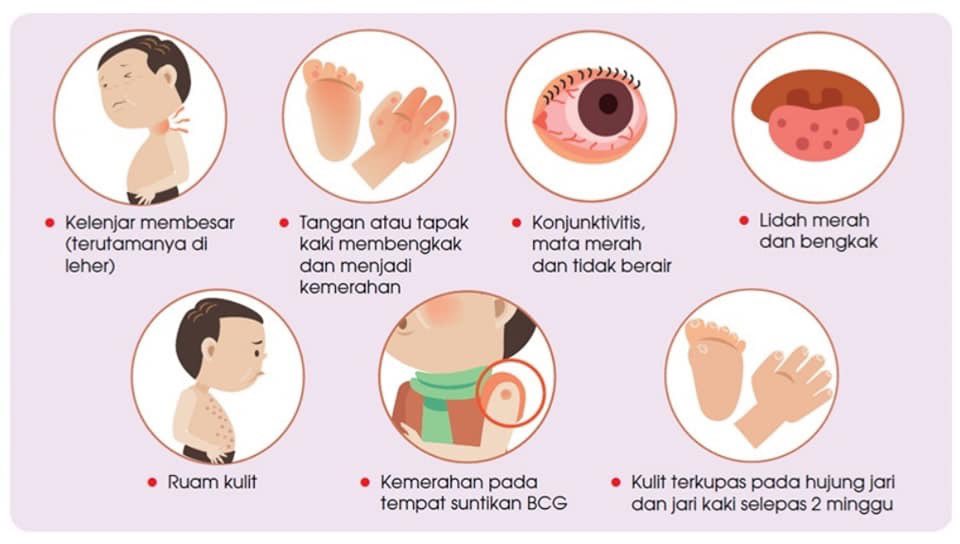
Then a specific stimulus is identified by determining specific IgG antibodies, for example, to food, pollen, etc.
Microscopic (examination of a smear under a microscope). Cytological examination is carried out for the purpose of morphological assessment of the cellular composition, changes in cells (nucleus, cytoplasm, their ratio). According to the data obtained, preliminary diagnoses of benign, malignant tumors, and other non-tumor lesions are made.
Pathological (biopsy). A skin biopsy is performed for the purpose of microscopic detection of pathology – non-cancerous skin diseases (for example, psoriasis, systemic lupus erythematosus, scleroderma, periarteritis nodosa, amyloidosis, skin tuberculosis, etc.), skin cancer, bacterial skin infections, fungal infections.
The results of the study are ready in 1-6 weeks. Scars can become a complication of this method, however, in some cases, a biopsy is simply necessary to obtain an accurate analysis and prescribe effective treatment.

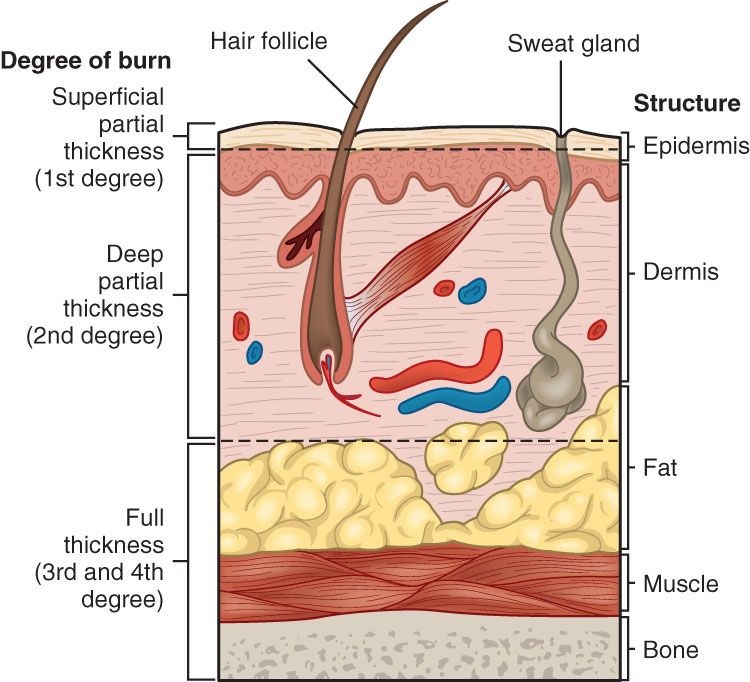 If you’re incontinent, use special products to absorb moisture.
If you’re incontinent, use special products to absorb moisture.


 however, they often give a false positive result;
however, they often give a false positive result;